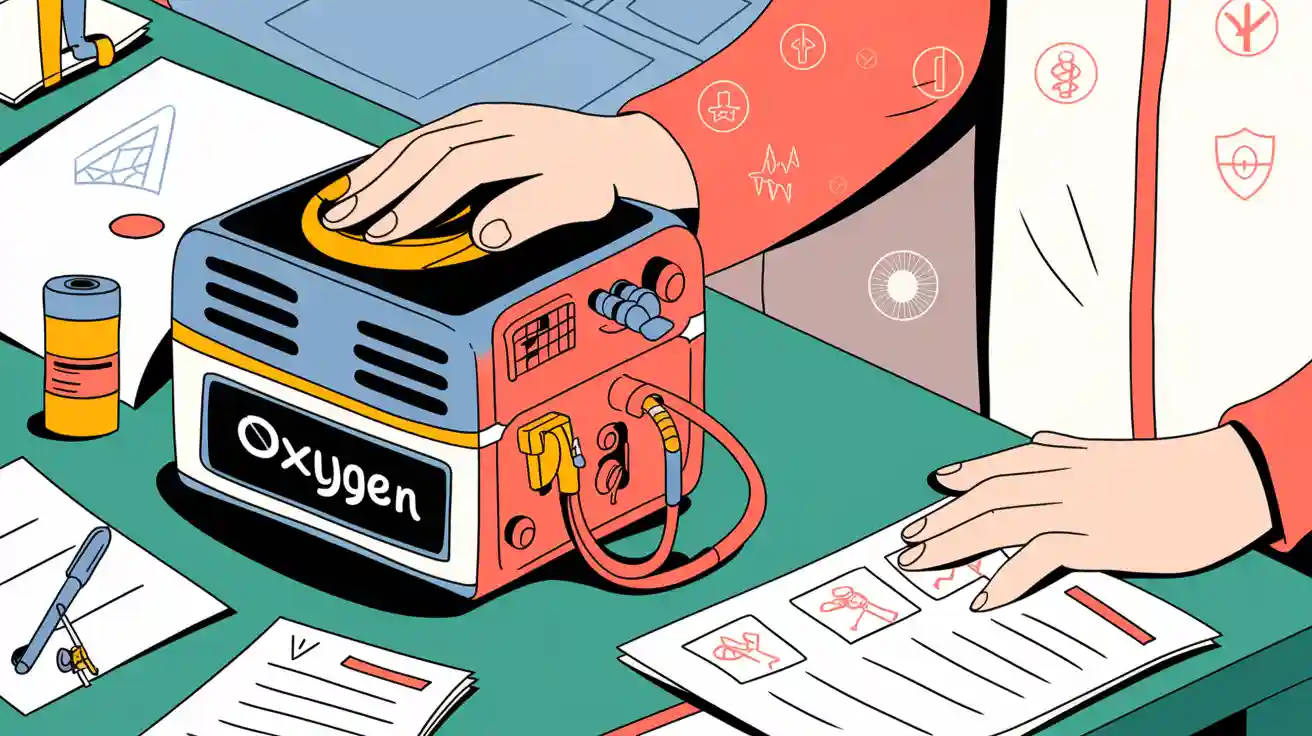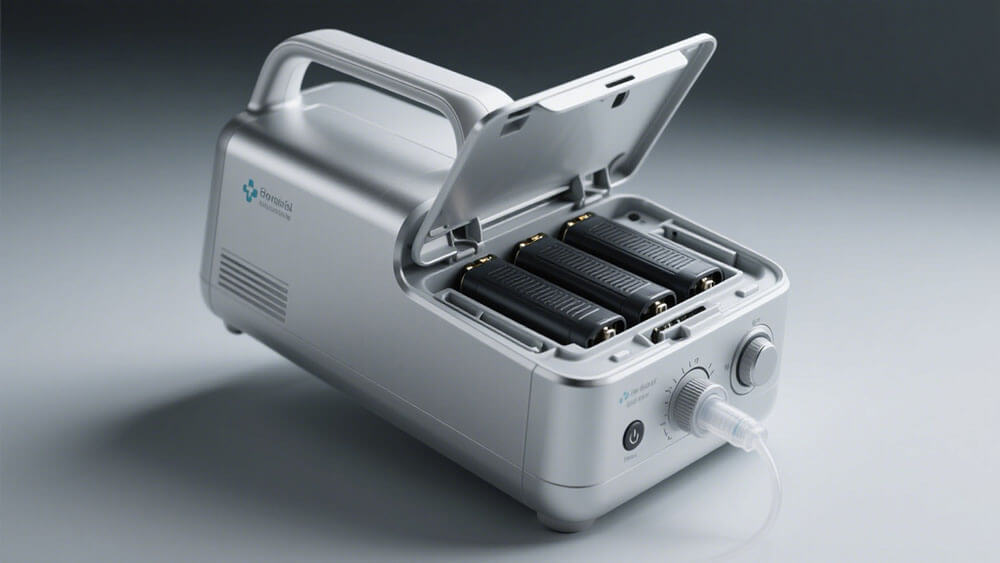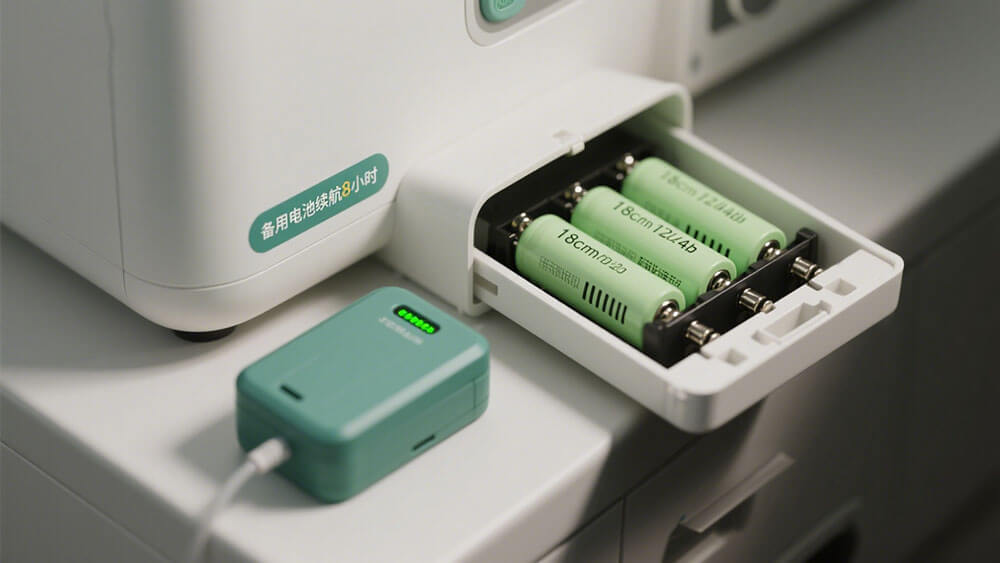
Selecting the right Lithium Battery for oxygenerator is crucial for ensuring the safety, reliability, and performance of your portable oxygen concentrator. When choosing a Lithium Battery for oxygenerator models, it’s important to consider how well they support continuous oxygen delivery, especially when traveling. High-capacity Lithium Battery for oxygenerator packs help reduce power anxiety and guarantee stable oxygen concentrator operation. The best oxygen concentrators depend on advanced Lithium Battery for oxygenerator technology, as highlighted in every oxygen concentrator buyer’s guide. Portable oxygen concentrators require Lithium Battery for oxygenerator options that offer an optimal balance of energy density, cycle life, and delivery efficiency. Although Lithium Battery for oxygenerator packs in portable oxygen concentrators may degrade over time, careful selection and proper maintenance will help maintain reliable oxygen delivery.
Key Takeaways
Always choose lithium batteries with proper safety certifications to protect against fire and ensure reliable oxygen delivery during travel and daily use.
Select lithium iron phosphate (LiFePO4) batteries for the best balance of safety, long life, and stable performance in portable oxygen concentrators.
Maintain your battery by charging it before full depletion, storing it in safe temperatures, and inspecting it regularly to extend its lifespan and avoid unexpected failures.
Part 1: Key Criteria

1.1 Certifications & Safety
When you select a lithium battery for oxygenerator, you must prioritize certifications and safety standards. Regulatory compliance is not optional in the medical sector. Lithium batteries used in portable oxygen concentrators must meet strict requirements to ensure patient safety and device reliability. Here are the most important certifications and standards you should look for:
Compliance with FDA regulations for medical devices in the United States.
Adherence to PHMSA hazardous materials regulations, harmonized with ICAO Technical Instructions for air transport.
FAA acceptance criteria for carriage and use on board aircraft, including a label confirming conformity.
Maximum battery capacity of 100 watt-hours (Wh) for lithium-ion batteries installed in portable oxygen concentrators, unless you have airline approval.
Compliance with radio frequency emission standards to prevent interference with aircraft systems.
Approval under SFAR No. 106 after demonstrating full regulatory compliance.
Internationally, you should ensure batteries comply with IEC 62133, the primary safety standard for rechargeable lithium batteries in medical devices. This standard covers electrical, mechanical, and chemical hazards, including overcharging, short-circuiting, and thermal runaway. Additional standards such as UN/DOT 38.3, IEC 62619, and UL 1642 may apply depending on your application context.
Tip: Always verify that your lithium battery for oxygenerator comes from a supplier committed to sustainability and responsible conflict minerals sourcing. This not only supports ethical practices but also reduces supply chain risk.
Using non-certified batteries exposes your oxygen concentrator to risks such as thermal runaway, fire, or explosion. These battery issues can result from improper charging, damaged cells, or incompatible chargers. Certified batteries minimize these hazards and ensure compliance with both medical and aviation regulations.
1.2 Battery Types
Choosing the right battery chemistry is essential for balancing safety, performance, and longevity in portable oxygen concentrators. The three main types you will encounter are lithium iron phosphate (LiFePO4), lithium-ion, and lithium polymer (LiPo). Each has unique features and application scenarios across Medical, Robotics, Security System, Infrastructure, Consumer Electronics, and Industrial sectors.
Battery Type | Safety | Lifespan (Charge Cycles) | Energy Density | Unique Features | Ideal Use Case |
|---|---|---|---|---|---|
Safest; stable chemistry, less prone to overheating or fire | 2,000+ cycles; longest lifespan | Lower energy density than Li-ion and Li-Po | Long lifespan, very safe, reliable | Applications requiring safety and long life, e.g., oxygen generators | |
Less safe; risk of thermal runaway and overheating | 500-1,000 cycles; shorter lifespan | Highest energy density (150-200 Wh/kg) | Compact, high power output, fast charging | Compact devices needing high power, but less safe | |
Less safe than LiFePO4; flexible but shorter lifespan | Shorter than LiFePO4 | Energy density between LiFePO4 and Li-ion | Slim, lightweight, flexible design | Thin or oddly shaped devices |
LiFePO4 batteries stand out for their chemical stability and long cycle life, making them the preferred choice for oxygen concentrator applications where safety and reliability are critical. Lithium-ion batteries offer higher energy density, which benefits compact portable oxygen concentrators but introduces more battery issues related to overheating and short battery life. Lithium polymer batteries provide flexibility in design and are commonly used in high-end portable medical devices due to their thin profile and customizable shapes.
Note: Always standardize terminology when specifying battery types in procurement documents. This reduces confusion and ensures you receive the correct chemistry for your oxygen delivery requirements.
1.3 Capacity & Weight
Battery capacity and weight directly impact the portability and usability of your portable oxygen concentrator. You need to balance battery life, device weight, and oxygen delivery to meet patient and operational needs. Most portable oxygen concentrators offer battery life ranging from 2 to 10 hours per charge, depending on the oxygen flow rate and device settings. Extended-life batteries are available for some models, allowing longer oxygen delivery without frequent recharging.
A lighter battery enhances comfort and mobility for patients who rely on portable oxygen concentrators. The combined weight of the device and battery determines how easily you can transport and use the oxygen concentrator throughout the day. Heavier batteries may require trolleys or carts, which can reduce independence and convenience. Conversely, lighter batteries improve usability, especially when you need to carry spare or external packs for extended oxygen delivery.
Tip: Always consider the liters per minute and oxygen flow rate required for your application. Higher flow rates demand more power, which can lead to short battery life if you do not select the appropriate battery capacity.
Battery issues such as frequent charging, short battery life, and the need for regular replacement can disrupt oxygen delivery and patient care. To minimize these challenges, source batteries from reputable manufacturers who offer strong warranties, rigorous safety testing, and proven reliability in medical environments.
Part 2: Lithium Battrey for oxygenerator: Compatibility & Maintenance

2.1 Model Compatibility
You must verify that each lithium battrey for oxygenerator matches the voltage and requirements of your oxygen concentrator. Batteries are specific to each portable oxygen concentrator model and are not universally interchangeable. Always consult the owner’s manual or manufacturer’s documentation to confirm the correct battery specifications. Download manuals from official sources if originals are unavailable. Check the battery’s voltage, capacity, and connector type against the oxygen concentrator’s requirements. Common compatibility issues include exceeding airline watt-hour limits, especially with double batteries over 160 Wh, which airlines often prohibit. Single batteries around 92 Wh are generally accepted for travel. Ensuring proper battery replacement procedures helps prevent device malfunction and electrical hazards. If you encounter a non-charging battery or charging problems, review the manual for fixes and troubleshooting tips.
2.2 Battery Configurations
Portable oxygen concentrators use various battery configurations, such as 4-cell, 8-cell, and double 16-cell options. An 8-cell battery typically provides 4 to 8 hours of oxygen delivery, while a 16-cell battery can extend usage up to 16 hours. Higher cell counts increase battery life and improve portability for users who need extended oxygen delivery. Airlines allow lithium batteries up to 160 Wh installed in medical devices, but you must notify the airline in advance. Spare batteries must be carried in the cabin, with terminals protected against short circuits. The FAA recommends limiting the state of charge to 30% during air transport. Always follow airline packaging and quantity rules to avoid battery issues during travel.
Configuration | Typical Battery Life | Portability | FAA Compliance |
|---|---|---|---|
4-cell | 2.5–4 hours | High | Yes |
8-cell | 4–8 hours | Moderate | Yes |
16-cell | Up to 16 hours | Lower | Often No |
2.3 Maintenance Tips
Proper maintenance extends the lifespan of lithium battrey for oxygenerator and ensures safe oxygen delivery. Charge the battery before it fully depletes, ideally at 20–30% remaining power. Avoid extreme temperatures; store and use batteries between 41°F and 95°F. For long periods of inactivity, store batteries at a partial charge in a cool, dry place. Use only manufacturer-approved chargers to prevent battery issues. Charge in well-ventilated areas and disconnect once fully charged. Remove the battery when the device is not in use to avoid slow discharge. Inspect cables, connectors, and contacts monthly for damage. Recalibrate batteries monthly by fully depleting and recharging them. Watch for signs of swelling, overheating, discoloration, or unusual odors, which indicate the need for replacement. If you notice a non-charging battery or short battery life, refer to your manual for how to troubleshoot a battery and fixes and troubleshooting tips. For optimal safety and extending battery life, use a battery management system (BMS) to monitor charging cycles and prevent overcharging.
Tip: Dispose of used batteries at certified recycling centers. Tape terminals or bag each battery to prevent short circuits. Follow local regulations for hazardous waste management.
Choosing certified lithium battery packs for your portable oxygen concentrator protects users and meets strict safety standards. You benefit from advanced features like battery management systems and temperature sensors, which minimize fire risks and device failures. Regular maintenance and timely replacement keep your oxygen concentrator reliable and ready for emergencies.
Certified batteries undergo rigorous testing for abuse, fire, and transport safety.
Monthly inspections and rotating spare batteries extend lifespan and prevent unexpected shutdowns.
Trusted suppliers validate battery performance and ensure compliance with the latest industry standards.
Consult Large Power for custom portable oxygen concentrator battery solutions.
FAQ
1. What makes Large Power lithium battery packs suitable for portable oxygen concentrators?
Large Power offers medical grade lithium battery packs with advanced safety features, long cycle life, and strict compliance. You can request a custom consultation for tailored solutions.
2. How do you troubleshoot charging problems or a non-charging battery in an oxygen concentrator?
Check connectors, use manufacturer-approved chargers, and follow device manuals. For persistent battery issues, consult your supplier for fixes and troubleshooting tips.
3. What is the recommended process for replacement and how to replace a battery in a portable oxygen concentrator?
Turn off the device, disconnect the old battery, and install the new one. Always match voltage and capacity. Refer to the oxygen concentrator buyer’s guide for detailed steps.




